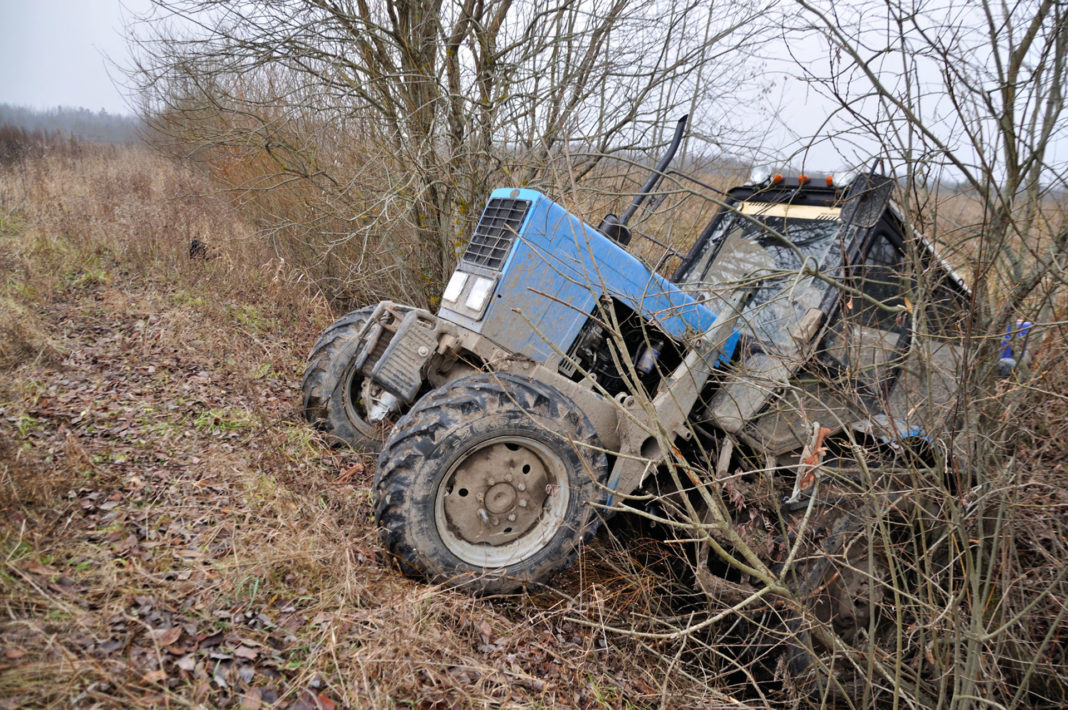Farm accidents have risen by 13% in the last 5 years and by 31% in the last ten years according to a national survey of farm accidents conducted by the Teagasc National Farm Survey (NFS).
The survey found that in the five-year period from 2012 to 2017, 11% of farms had an accident and in total 2,814 accidents occurred.
By farming system, the survey indicates that dairy farms had the highest accident rate of 18% over the survey period compared to tillage (12%) and sheep (11%) farms with the cattle systems of rearing (9%) and finishing (8%) reporting lower accident levels.
The survey indicates that 42% of accidents involved livestock with farm vehicles or machinery involved in a further 25%. Trips or falls resulted in 13% of farm accidents followed by chainsaws (7%) and farm buildings (6%).
The proportion of accidents involving farm vehicles or machinery has more than doubled from 2011 to 2017, while livestock related accidents increased by 26%. The survey, however, indicates a marked decline in the proportion of accidents due to trips and falls.
Almost two-thirds of farm accidents occurred in the farmyard (64%) and a further 15% in farm buildings. Almost one-fifth of accidents (19%) were in fields with only 2% on farm roadways or lanes.
The 2017 Teagasc NFS survey indicates that the vast majority of on-farm accidents (92%) involved a family member, with 80% occurring to the farmer. Twelve per cent involved a spouse or another family member. The remaining proportion of accidents involved workers (5%) and others (3%).
Almost all farm accident victims (97%) required medical treatment with 73% attending hospital, a further 19% attended a doctor and 4% received first aid. Tragically 1% of such accidents reported resulted in a fatality.
In terms of work time loss due to a farm accident, almost one-third (30%) of accidents resulted in a work absence of more than a month, with 21% being more than two months. Thirteen per cent of accidents resulted in an 11 and 30 day work absence, 22% a 4-10 day work absence, and 1-3 days an 18% absence respectively. Just 17% of accidents resulted in no work time loss.
The Teagasc survey data indicates that younger farmers are more likely to have non-fatal accidents in contrast to fatal accidents. Thirteen per cent of farmers in the 40-50 and 50-60 age brackets suffered a farm accident, followed by 12% for farmers below 40 years of age. Nine per cent of farmers aged 60-70 and 7% over 70 years of age suffered a farm accident over the timeframe of the survey.
Responding to the survey, Minister for Agriculture, Food and the Marine, Michael Creed T.D. said: “These non-fatal accident statistics make for stark reading and highlight that behaviour is an important part of safety. My Department have included a farm safety component to the Knowledge Transfer Group meetings and also made farm safety a mandatory part of drawing down TAMS grants. Farmers need to take time to plan their work and not take risks. The impact on families of serious accidents is unquantifiable, so I appeal once again to farmers to make the change to keep safe.”
The 2017 Teagasc NFS farm accident survey data represents 85,000 farms with a standard output of greater than €8,000. The study is co- authored by Teagasc Health and Safety Specialist, Dr John McNamara with Teagasc NFS colleagues Dr Emma Dillon, Mr Brian Moran and Dr John Lennon.








